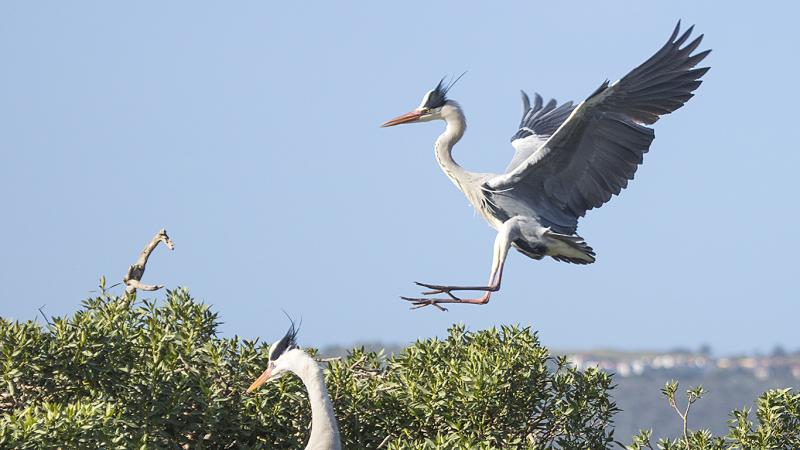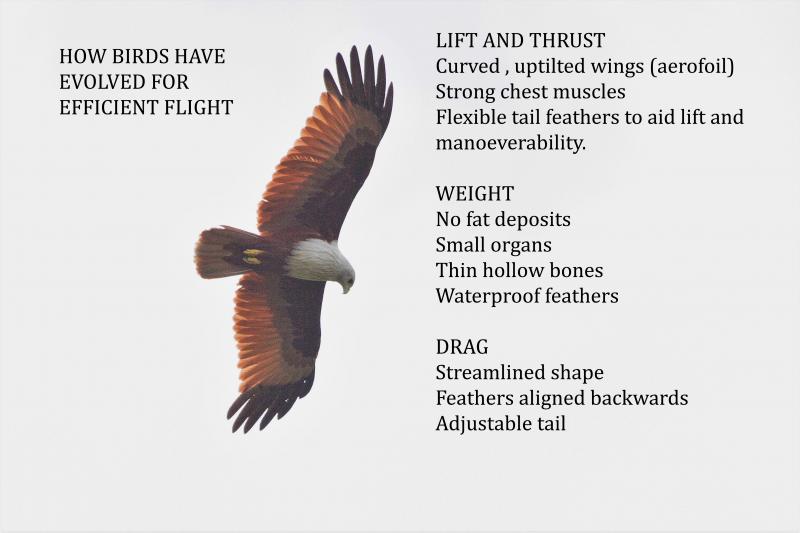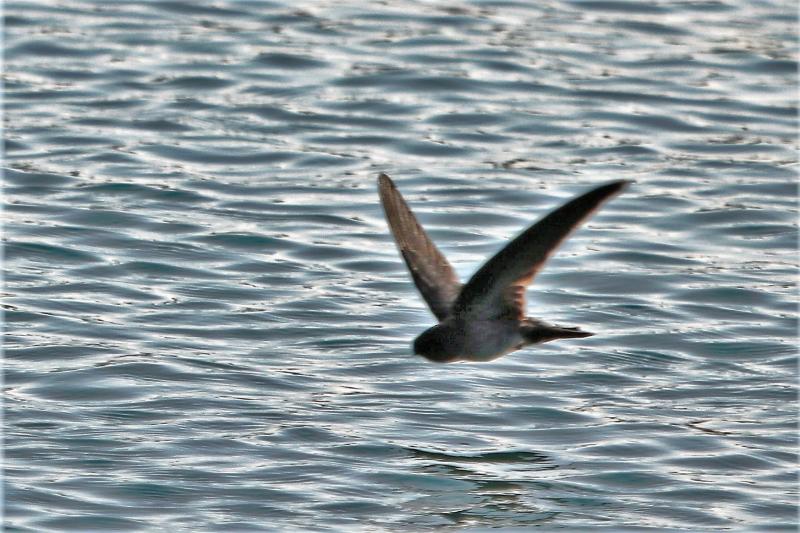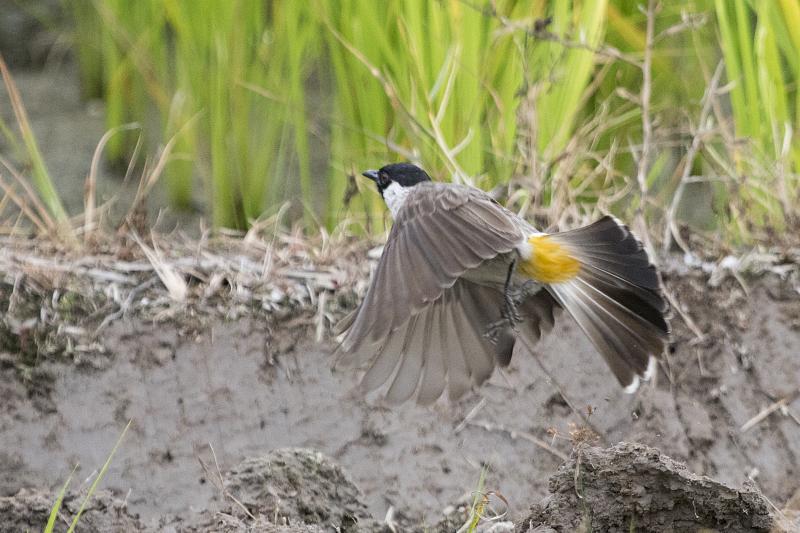2. Flight
Feathers are a key element in enabling birds to fly. Each feather is shaped and positioned to streamline airflow around the wings and body. The genius of birds is their ability to adjust with precise movements of wings, tail and body, the amount and angle of airflow in order to choose direction, inclination and speed of flight. These enviable skills are only part of the bird's repertoire. They have levels of perception that poor grounded quadrupeds and bipeds do not even know exist. Birds are able to take advantage of permutations of wind, air currents and air temperature which they detect with their sensitive skin and adjust their flight behaviour accordingly. Whenever I watch gulls soaring and wheeling on the convection currents high above a sea cliff I cannot help but feel a sense of awe at their mastery of the skies.
A Perfect Landing
Look closely at the interplay of body parts in the picture below of a grey heron on Thesen Island, South Africa, coming in for a difficult landing on top of a tree with a tangle of branches and leaves.

Grey Heron
The body of this grey heron has shifted from a horizontal to a more vertical position with legs and feet thrust forward to cushion the carefully controlled landing on this unstable platform of branches and leaves. The wings are able to beat rapidly against the air flow increasing drag and slowing the bird as it makes its final descent. The perfect pilot.
Aerodynamics
Below we have the basic physics of aerodynamics, the opposite and opposing forces that are in play when birds (and aeroplanes) are in flight.

African Spoonbill
This spoonbill at Leisure Island, Western Cape, is photograhed completing a wing downstroke comparable with a swimmer's breastroke. As the wing pushes down it also pivots back to provide both lift and thrust. Note the head and legs horizontal to the body to reduce drag.
If you look closely at a bird's wing you will notice that it is thinner at the back than the front and curves across the top. This shape is aerodynamically efficient as it allows quicker airflow over the longer upper surface of the wing and slower over the shorter lower surface. The combination provides lift as the air pressure on top of the wing is lower than the air pressure below.
Beyond Feathers
Feathers enable birds to fly in conjunction with several other features that have evolved over millions of years: powerful wing muscles; light weight; streamlined shape; mastery of the dynamics of flight that is still studied by aircraft designers and engineers. Bird skeletons are filled with air pockets making the bird light. Organs are reduced in number, for instance there is only one ovary instead of two. But the heart is larger to pump blood more efficiently and the body temperature is higher which enables a rapid muscle response. Both respiratory and circulatory systems are fine tuned to provide the enormous expenditure of energy needed to fly. Even a bird's metabolic rate is faster than a mammal's for rapid digestion so food is quickly converted to the energy required for flight.

Brahminy Kite - broad wings for low speed soaring
The broad flaired and slotted wings and fanned tail of this brahminy kite in Southern Thailand are ideally suited for high lift, low speed soaring, and slow descents with minimum effort using air currrents high above the territory where it hunts for prey, aided by powerfull eyesight. Raptors and carrion eaters such as vultures, eagles and hawks have wings with similar characteristics, as do pelicans.
Long Distance/High Speed
Other birds have wings that evolved to meet different needs. The albatross below has the greatest wingspan of any bird and this feature enables it to soar for thousands of miles in the unrestricted vastness of the seas, rarely returning to land except to breed.

Northern Royal Albatross - long, slim wings for long distance and high speed soaring
Albatross wings provide good lift while using very little energy. They also enable high speed but are less nimble than the manoeverable broad slotted wings of birds that operate over land. The Otago Pennisula, New Zealand where this bird was photographed, is the only place in the world where the royal albatross nests on the mainland and it is normally found breeding only on remote islands. Gannets, gulls, terns and frigate birds are examples of other sea birds that have longer wings for soaring.
High Speed/Short Distances

Glossy Swiftlet - thin, tapered and pointed wings for high speed flight
The wings on this swifllet are built for speed but it needs to work hard to keep in the air. The wing bones are relatively long and the wings are quite thin, tapered and pointed enabling high speed flight with little drag and low energy consumption. The bird needs a lot of small, rapid wing flapping relative to glides: aerodynamically good for high speed but less efficient at low speed. The terrible photograph above was the best taken after a couple of hours of trying to get a decent shot of swifltets diving at high speed to drink for a micro second from a swimming pool in Northern Bali, Indonesia.
Control/Manoeuverability

Sooty-headed Bulbul - elliptical, highly slotted wing feathers for control and manoeuverability
Photographed in a ploughed field on Samosir Island, Lake Toba, Sumatra, this bulbul has short, rounded (elliptical) wings that give a high degree of control and enable the bird to manoeuvre in confined spaces. There is also reduced drag to for rapid ascent and descent with rapid wing beats. Notice the gaps (slots) between wing feathers that help to prevent stalling in slow flight, sharp turns and frequent takeoff and landing. The widely fanned tail provides lift and also gives finely tuned control over movement and direction. The majority of smaller forest, scrubland, bush and garden birds, including robins, sparrows and thrushes fit into this category.